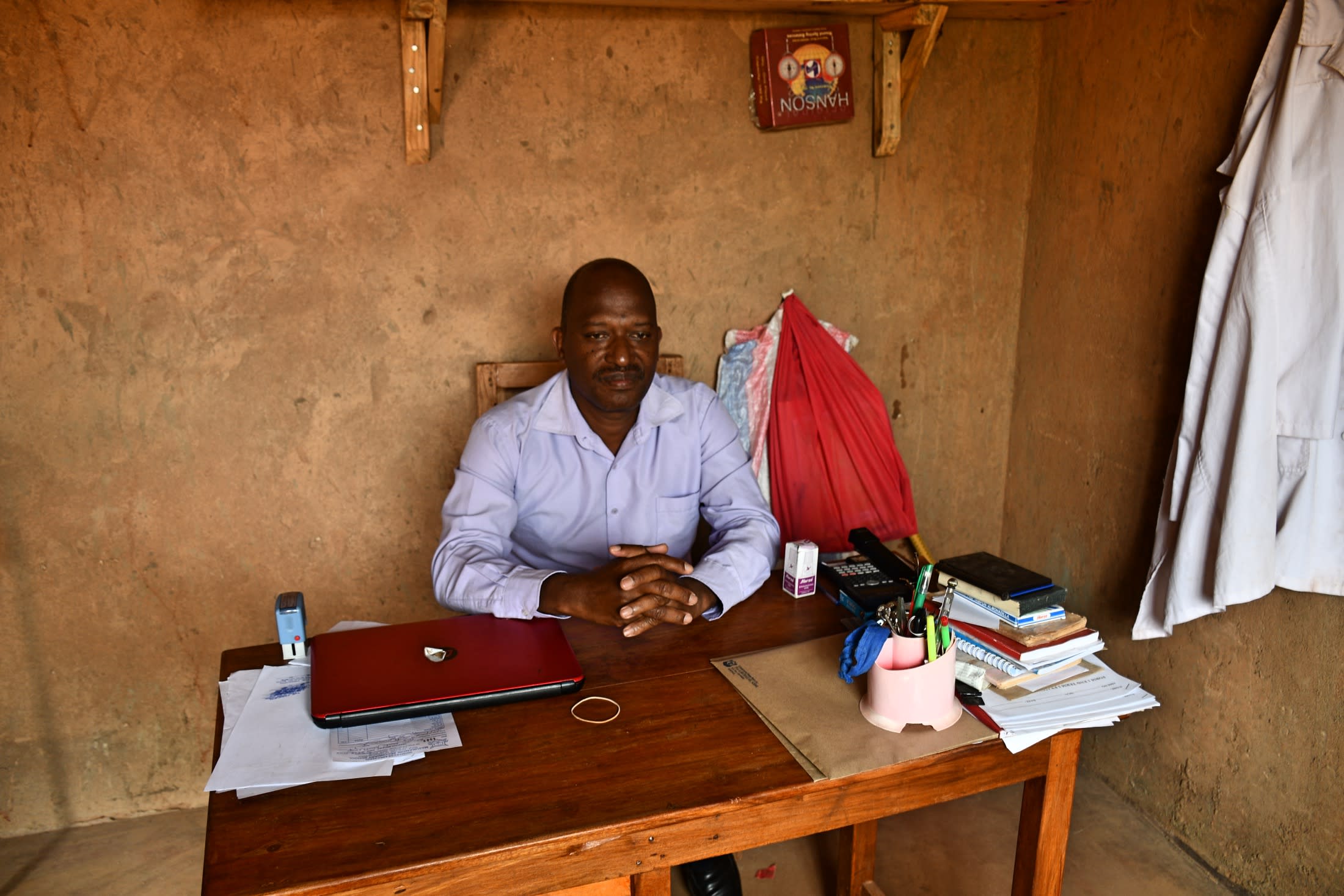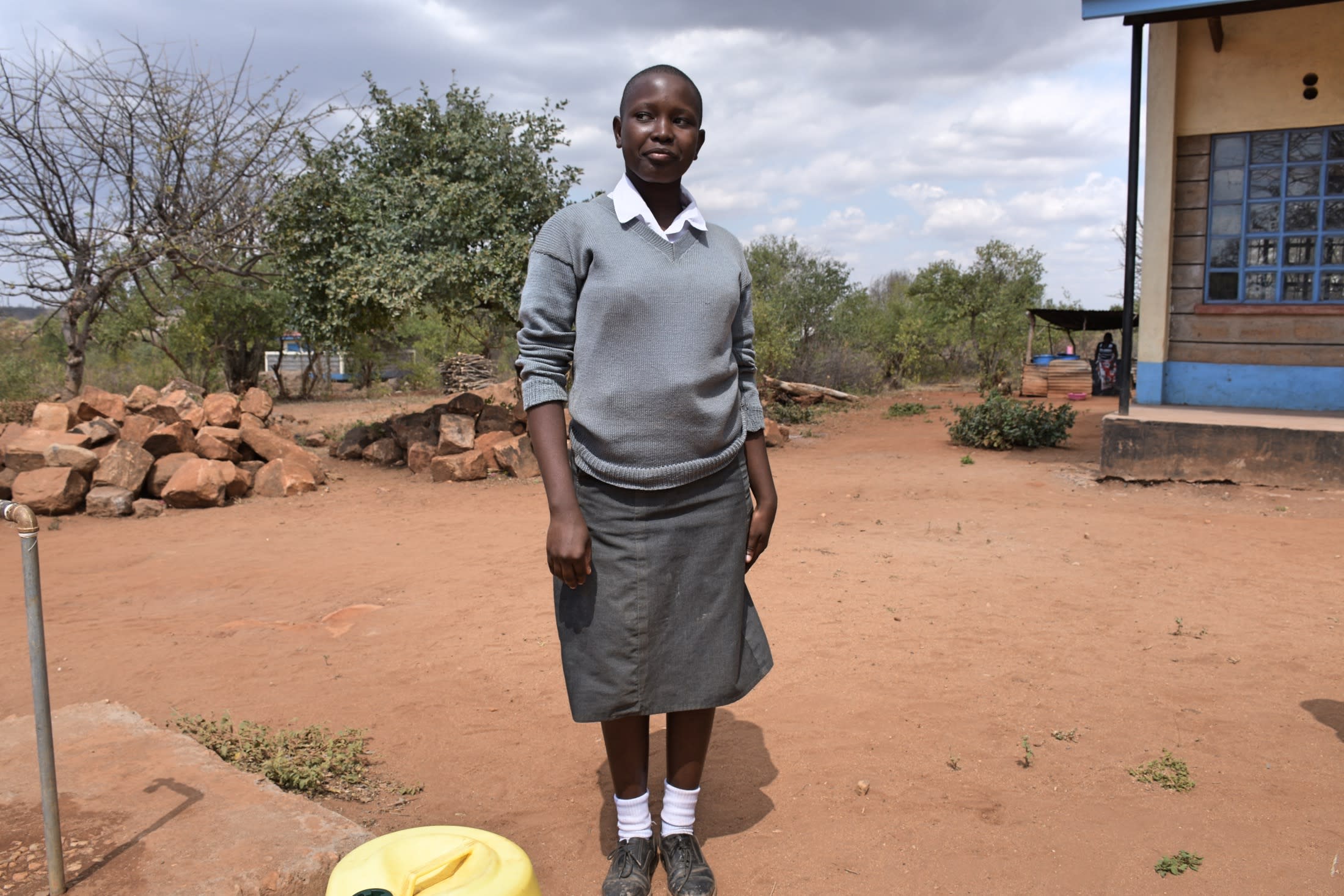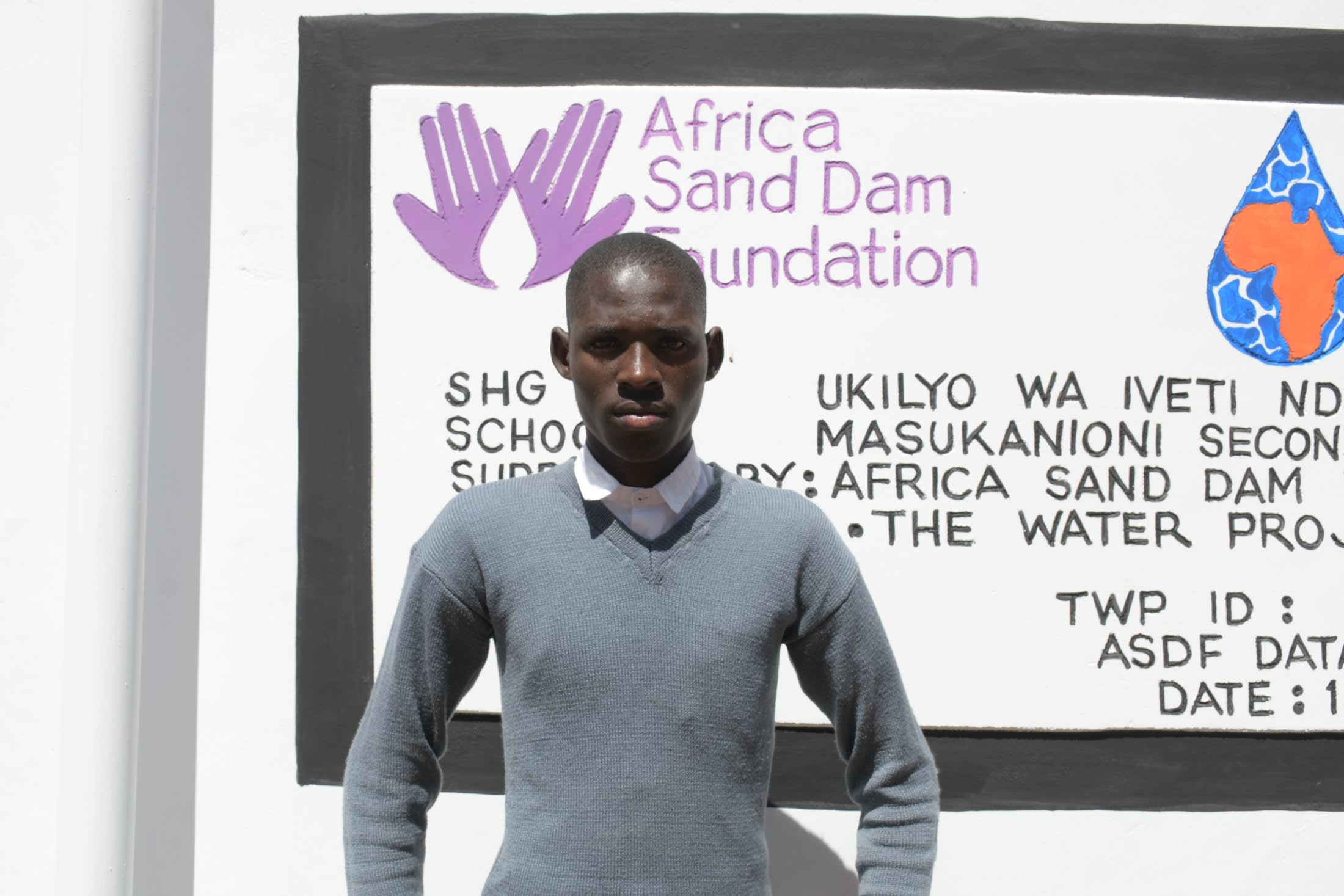Masukanioni Secondary School administration buys water from water vendors and the students' parents for one Kenyan shilling per liter. The water-sellers fill the school's small water storage tank and then students collect water from a connected standpipe. Unfortunately, the water they are collecting is from the only sources for kilometers around: open scoop holes dug in a dry riverbed.
The water from these scoop holes is not safe for consumption to say the least, but water is so scarce in Southeast Kenya that there is no alternative. The scoop holes are shared with domestic animals and wildlife who often excrete around the source as they use it. According to the headteacher, the school's 136 students constantly seek medical aid due to infections like typhoid, diarrhea, and waterborne parasites.
"[The] management of the school is difficult because most [of our] problems are caused by [the] water shortage," said headteacher Patrick Musyoka (shown below).

"For instance, most of my students cannot perform well because there is little water to drink," Patrick continued. "A lot of money is spent on purchasing water rather than getting more learning materials to improve the school's academic performance. Getting water is difficult because of the rampant drought, and there was a time I had to use motorcycle taxis to transport water to school."
17-year-old Eunice (pictured below near the standpipe that is connected to the small rain tank) is an agricultural student. Because there isn't enough water at school already, she must carry a 40-pound jerrycan with her to school every day in order to water her crops.

"We have insufficient water for drinking and washing our classrooms," Eunice said. "We also have agricultural projects that require water, which is inadequate. Meals [are delayed] because we have to wait for water. Like yesterday, we took lunch towards the evening, which disrupted the evening lesson. It is difficult to concentrate in class on an empty stomach."
The installation of a much larger rainwater tank will take full advantage of the few times it does rain in this region. This water source will ensure the school has enough clean water for drinking and cooking. Meals will be prepared on time, and students' academic performance will get a boost. The school's water expenses will also reduce, and those new funds can be allocated to improving the school's facilities. And, most importantly, clean drinking water will ensure students are no longer exposed to water-related infections.
Rain Tank
We will build a 104,000-liter rain tank for this school, making the others look tiny in comparison. Because of how rarely it rains in Southeastern Kenya, this tank's large volume is designed to store as much water as possible during the seasonal rains, making more water available through the dry months. This water will benefit the students, teachers, and supplementary staff.
Parents will mobilize the materials needed for construction, including sand, stones, and water. They will also lend their strength and time to help with the construction. We will complement their materials with a skilled artisan to lead the project in addition to providing the tools, lumber, metal, cement, and gutter system.
As soon as the tank has time to cure, it can begin collecting rainwater for the school's use.
Training
We will train students and staff on sanitation, hygiene, and other topics for 1 day. Those in attendance will form a school health club that will promote good hygiene and sanitation practices both at school and at home. They will learn all of the steps to proper handwashing, how to treat water, and how to keep their environment clean. The school will also be taught how to best oversee and maintain their new rain tank and handwashing stations.
Handwashing Stations
A total of 3 handwashing stations will be installed upon the project’s completion and before training. These are 1,000-liter plastic tanks fitted with 3 taps each, allowing 9 students to wash their hands at once. The student health club and school management will be responsible for making sure the tanks are filled with water and that a cleaning agent such as soap or ash is always available.





 Rainwater Catchment
Rainwater Catchment
 Rehabilitation Project
Rehabilitation Project
















 We delivered three new handwashing stations in time for training. Each new station has three taps so nine students can wash their hands simultaneously.
We delivered three new handwashing stations in time for training. Each new station has three taps so nine students can wash their hands simultaneously.









